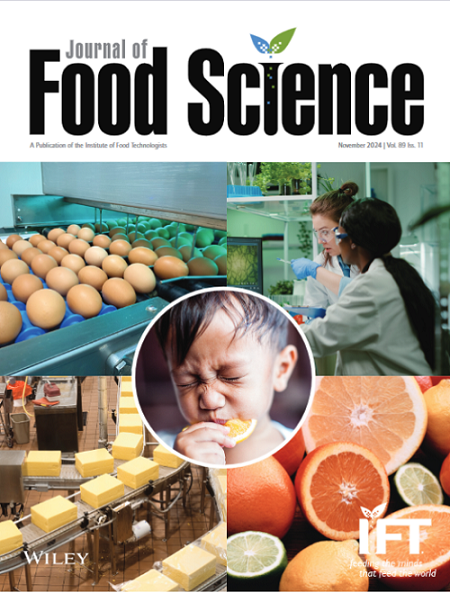UPLC-PDA-ESI-MS based chemometric analysis for solvent polarity effect evaluation on phytochemical compounds and antioxidant activity in habanero pepper (Capsicum chinense Jacq) fruit extract
Abstract
The effect of solvents with different polarities on the recovery of phytochemicals (carotenoids, capsaicinoids, and phenolic compounds) from habanero pepper (Capsicum chinense) and their association with antioxidant activity (ABTS•+ and DPPH) was evaluated through Ultra-Performance-Liquid Chromatography coupled with a Photodiode Array Detector and a Electrospray Ionization Mass Spectrometry (UPLC-PDA-ESI-MS)-based chemometric analysis, including linear correlation, multiple linear regression, and principal component analysis (PCA). The solvent polarity scale was established according to solvent dielectric constants (ɛ). Color variation (ΔE) was used to determine the presence of carotenoids, with the highest ΔE obtained using low-polarity solvents (hexane and ethyl acetate). A high content of capsaicin and dihydrocapsaicin was recovered with acetone (4.29 and 3.76 mg g⁻¹ dry weight, respectively). Phenolic compounds such as N-caffeoyl putrescine and derivatives of luteolin and apigenin were identified through mass spectrometry. A high recovery (26.54–31.74 mg GAE g⁻¹ dry weight) of these compounds was obtained using intermediate-polarity solvents. The PCA revealed clustering of solvents based on their affinity for extracting specific compounds and their association with antioxidant activity. A significant correlation was observed between ΔE and DPPH, indicating that carotenoid pigments exhibited higher DPPH radical inhibition capacity than other compounds. Total phenolic content (TPC) and phenolic compounds (phenolpolyamides, hydroxycinnamic acids, and hydroxybenzoic acids) were clustered with the ABTS•+ radical inhibition assay. The information obtained is crucial for selecting suitable solvents in the extraction and purification protocols of bioactive compounds. It is also valuable for conducting plant metabolomic analyses and for studies focused on determining the effects of bioactive compounds in food, pharmaceutical, and cosmeceutical applications.
Practical Application
The results describe the characteristics of the extracts obtained using different solvents. Therefore, the information may be useful for establishing extraction protocols for phytochemical compounds in fruits from Capsicum chinense for various purposes, such as metabolomic analysis, the recovery of specific compounds with antioxidant activity, and food applications.

 求助内容:
求助内容: 应助结果提醒方式:
应助结果提醒方式:


